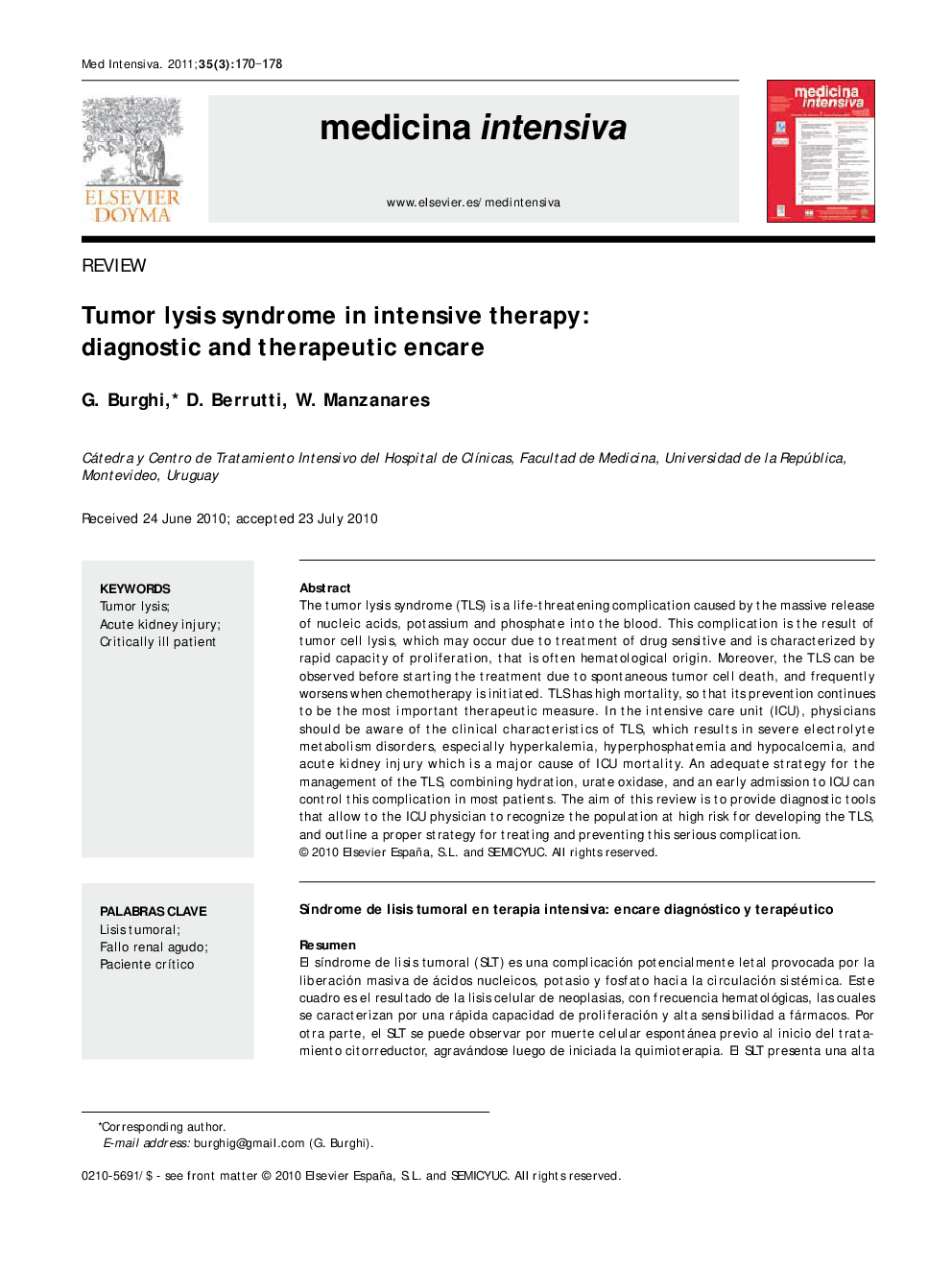| Article ID | Journal | Published Year | Pages | File Type |
|---|---|---|---|---|
| 3114257 | Medicina Intensiva (English Edition) | 2011 | 9 Pages |
The tumor lysis syndrome (TLS) is a life-threatening complication caused by the massive release of nucleic acids, potassium and phosphate into the blood. This complication is the result of tumor cell lysis, which may occur due to treatment of drug sensitive and is characterized by rapid capacity of proliferation, that is often hematological origin. Moreover, the TLS can be observed before starting the treatment due to spontaneous tumor cell death, and frequently worsens when chemotherapy is initiated. TLS has high mortality, so that its prevention continues to be the most important therapeutic measure. In the intensive care unit (ICU), physicians should be aware of the clinical characteristics of TLS, which results in severe electrolyte metabolism disorders, especially hyperkalemia, hyperphosphatemia and hypocalcemia, and acute kidney injury which is a major cause of ICU mortality. An adequate strategy for the management of the TLS, combining hydration, urate oxidase, and an early admission to ICU can control this complication in most patients. The aim of this review is to provide diagnostic tools that allow to the ICU physician to recognize the population at high risk for developing the TLS, and outline a proper strategy for treating and preventing this serious complication.
ResumenEl síndrome de lisis tumoral (SLT) es una complicación potencialmente letal provocada por la liberación masiva de ácidos nucleicos, potasio y fosfato hacia la circulación sistémica. Este cuadro es el resultado de la lisis celular de neoplasias, con frecuencia hematológicas, las cuales se caracterizan por una rápida capacidad de proliferación y alta sensibilidad a fármacos. Por otra parte, el SLT se puede observar por muerte celular espontánea previo al inicio del tratamiento citorreductor, agravándose luego de iniciada la quimioterapia. El SLT presenta una alta mortalidad, por lo que su prevención continúa siendo la medida terapéutica más importante. En la unidad de cuidados intensivos los médicos deben conocer su cuadro clínico, el cual se caracteriza por la existencia de graves trastornos del metabolismo hidroelectrolítico, en particular hiperpotasemia, hiperfosfatemia e hipocalcemia y por la aparición de una lesión renal aguda. Una adecuada intervención terapéutica implica la rápida admisión a unidad de cuidados intensivos, hidratación intravenosa y aporte de la enzima urato-oxidasa como las medidas más importantes. El objetivo de la presente revisión es proporcionar herramientas diagnósticas y terapéuticas que le permiten al médico intensivista reconocer la población en riesgo de desarrollar este síndrome, así como establecer una adecuada estrategia terapéutica y profiláctica.
